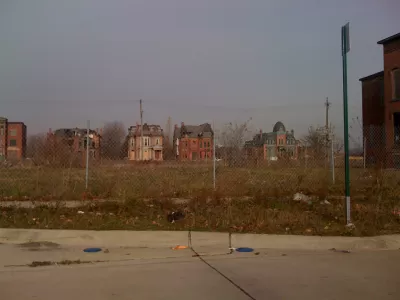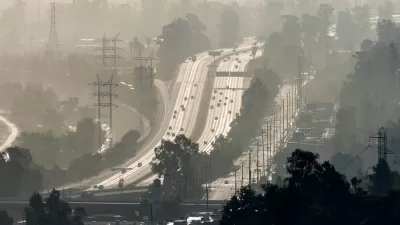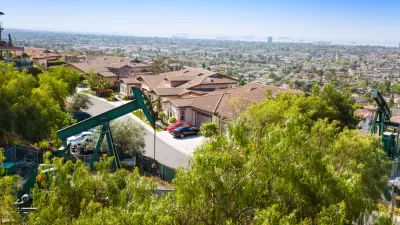The reforestation of Detroit has become a problem for allergy and asthma sufferers in the area.

In 1950 an estimated 1.8 million people lived in Detroit; today that number is closer to 700,000. The land left behind has created an opportunity for plants to reclaim space. "Plants and weeds grow with abandon in the newly exposed soils, and, during their growing seasons, those plants release their pollen loads into the air and into Detroiters’ airways," Lucas Joel writes for Undark Magazine.
Pollen can be an irritant for allergy sufferers and it can worsen asthma attacks. "Detroit currently ranks in the top 10 cities in the U.S. for asthma-related deaths, and a 2016 report revealed that 43.2 percent of asthma-afflicted children who were enrolled in Medicaid in the city had one or more emergency room visits per year for asthma, while the same figure for children in the rest of Michigan stood at 27.5 percent," reports Joel. While the issue of public health involves more than the presence of pollen, pollen is a factor. To make matters worse, it’s difficult to track how much pollen circulates in the area. The only pollen counter is located outside the center of the city, and what’s more, experts believe that pollen counts vary even at the neighborhood level.
Daniel Katz at the University of Michigan School of Public Health is trying to get to the bottom the question of where the pollen is with measuring devices. Katz hopes that mapping the type and volume of pollen around the city can help better inform officials and allergy sufferers as to where the pollen is and how to deal with it.
FULL STORY: As the Forest Moves Back in, Pollen Is on the Rise in Detroit

Maui's Vacation Rental Debate Turns Ugly
Verbal attacks, misinformation campaigns and fistfights plague a high-stakes debate to convert thousands of vacation rentals into long-term housing.

Planetizen Federal Action Tracker
A weekly monitor of how Trump’s orders and actions are impacting planners and planning in America.

In Urban Planning, AI Prompting Could be the New Design Thinking
Creativity has long been key to great urban design. What if we see AI as our new creative partner?

King County Supportive Housing Program Offers Hope for Unhoused Residents
The county is taking a ‘Housing First’ approach that prioritizes getting people into housing, then offering wraparound supportive services.

Researchers Use AI to Get Clearer Picture of US Housing
Analysts are using artificial intelligence to supercharge their research by allowing them to comb through data faster. Though these AI tools can be error prone, they save time and housing researchers are optimistic about the future.

Making Shared Micromobility More Inclusive
Cities and shared mobility system operators can do more to include people with disabilities in planning and operations, per a new report.
Urban Design for Planners 1: Software Tools
This six-course series explores essential urban design concepts using open source software and equips planners with the tools they need to participate fully in the urban design process.
Planning for Universal Design
Learn the tools for implementing Universal Design in planning regulations.
planning NEXT
Appalachian Highlands Housing Partners
Mpact (founded as Rail~Volution)
City of Camden Redevelopment Agency
City of Astoria
City of Portland
City of Laramie





























